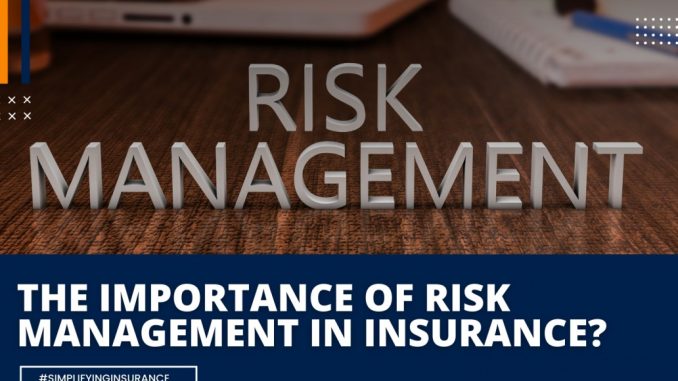
Risk management is a fundamental aspect of both personal financial planning and business strategy. It involves identifying potential threats, assessing their impact, and implementing measures to mitigate or transfer those risks. While there are many tools and techniques available to manage uncertainty, insurance remains the cornerstone of any effective risk management framework. It provides a structured and reliable way to absorb financial shocks, allowing individuals and organizations to operate with confidence even in the face of unforeseen events.
At its essence, insurance is a mechanism for transferring risk. Instead of bearing the full financial burden of a loss, policyholders pay a premium to an insurer who assumes that risk on their behalf. This transfer is not just a financial transaction—it’s a strategic decision. By securing insurance, individuals and businesses can protect their assets, income, and operations from disruptions that could otherwise be catastrophic. For example, a homeowner who purchases property insurance is safeguarding against the possibility of fire, theft, or natural disaster. Without that coverage, a single incident could result in financial ruin. Similarly, a business that invests in liability insurance is protecting itself from lawsuits that could jeopardize its reputation and solvency.
Insurance also plays a critical role in enabling risk-taking. Entrepreneurs, for instance, are inherently exposed to uncertainty. Launching a new product, entering a new market, or hiring employees all involve potential downsides. Insurance allows them to pursue these opportunities with a safety net in place. Workers’ compensation insurance ensures that employees are covered in case of injury, while commercial property insurance protects physical assets. These policies don’t eliminate risk, but they make it manageable. In this way, insurance supports innovation and growth by reducing the fear of financial loss.
Moreover, insurance provides a framework for understanding and quantifying risk. Insurers rely on actuarial science, data analytics, and historical trends to assess the likelihood and impact of various events. This analytical approach helps policyholders make informed decisions about coverage levels, deductibles, and exclusions. For example, a manufacturer located in a flood-prone area might choose to purchase additional flood insurance based on risk modeling. The process of obtaining insurance often prompts a deeper evaluation of vulnerabilities, encouraging proactive measures such as installing safety equipment or improving cybersecurity protocols. In this sense, insurance is not just a reactive tool—it’s a catalyst for risk awareness and prevention.
The role of insurance in risk management extends beyond individual policies. It contributes to broader economic stability and resilience. After a natural disaster, insured communities can recover more quickly, reducing the long-term impact on local economies. Insurers also play a role in promoting best practices and safety standards. For instance, auto insurers may offer discounts for vehicles with advanced safety features, incentivizing responsible behavior. Health insurers might support wellness programs that reduce chronic illness and lower claims. These initiatives demonstrate how insurance can shape behavior and reduce overall risk exposure.
In the corporate world, risk management is a formal discipline, and insurance is often one of the first tools considered. Companies conduct risk assessments to identify threats to their operations, finances, and reputation. Insurance is then used to transfer those risks that cannot be eliminated or mitigated internally. Directors and officers liability insurance, for example, protects executives from personal liability related to their decisions. Cyber insurance addresses the growing threat of data breaches and digital attacks. These policies are not just protective—they are strategic assets that support governance, compliance, and continuity.
Insurance also intersects with regulatory requirements. In many industries, certain types of coverage are mandated by law. Employers must carry workers’ compensation insurance, drivers must have auto liability coverage, and financial institutions often require fidelity bonds. These regulations reflect the recognition that insurance is essential for managing systemic risk and protecting stakeholders. Compliance with insurance mandates is not just about avoiding penalties—it’s about demonstrating responsibility and preparedness.
For individuals, insurance is often the first step in building a secure financial foundation. Life insurance ensures that loved ones are provided for in the event of death. Health insurance grants access to medical care without the burden of overwhelming costs. Disability insurance protects income in case of illness or injury. These policies provide peace of mind and allow individuals to focus on long-term goals such as education, retirement, or homeownership. Without insurance, even a minor setback could derail those plans.
The effectiveness of insurance in risk management depends on thoughtful selection and ongoing review. Coverage should be tailored to specific needs and adjusted as circumstances change. A growing family might need to increase life insurance, while a business expanding into new markets might require additional liability coverage. Working with knowledgeable advisors and staying informed about policy options ensures that insurance continues to serve its purpose effectively.
Ultimately, risk management is about anticipating the unexpected and preparing for it in a way that minimizes disruption. Insurance is the foundation of that preparation. It transforms uncertainty into manageable outcomes and empowers individuals and organizations to pursue their ambitions with confidence. While it is not a cure-all, it is an indispensable part of any strategy aimed at navigating the complexities of modern life and business. By starting with insurance, risk management becomes not just a defensive posture, but a proactive and empowering approach to securing the future.